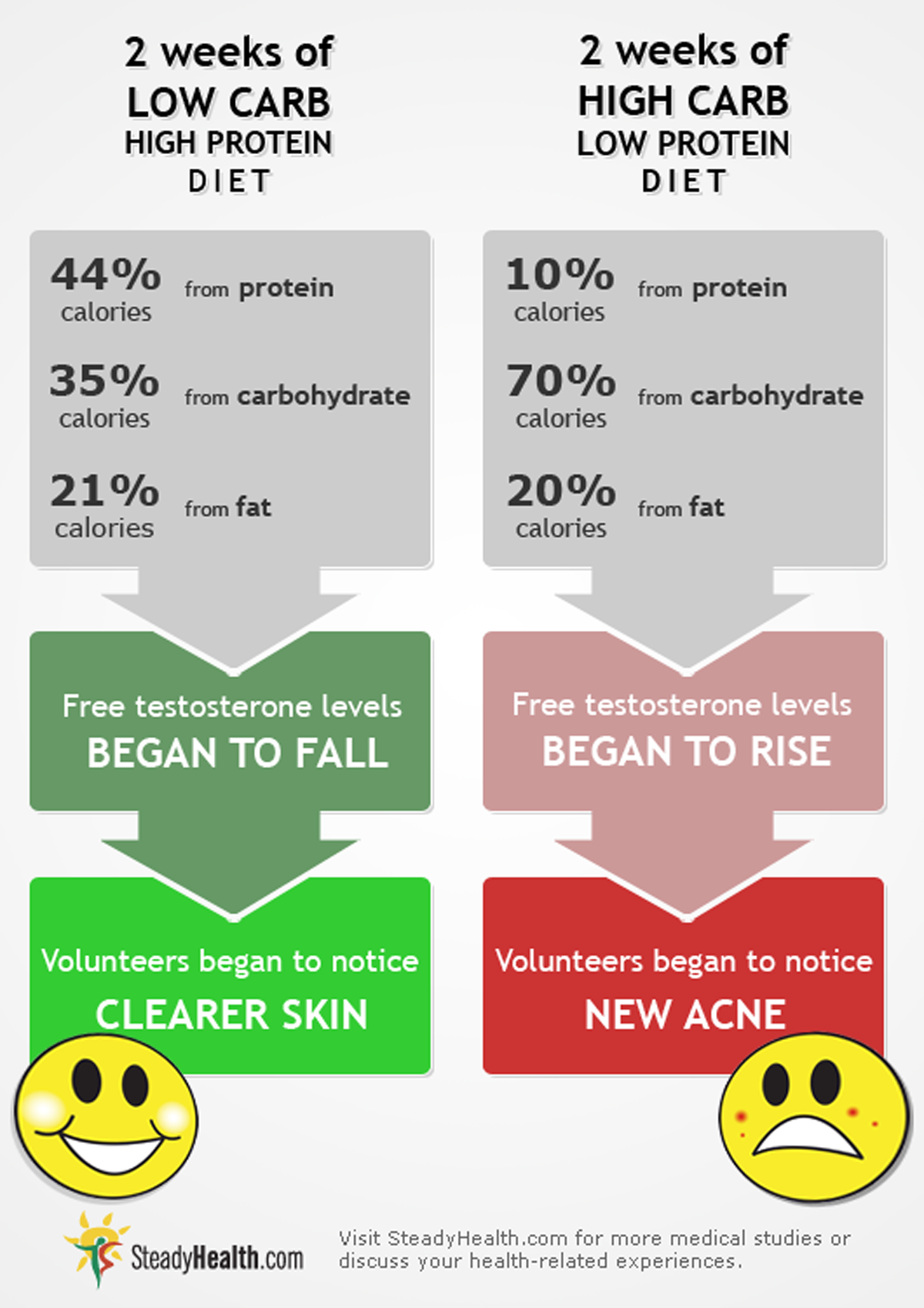Table of Contents
This compound transmits pain messages to your skin. Your skin responds by releasing a substance known as corticotrophin stimulating hormone, which in turns causes a specialized structure known as a mast cell to burst. Mast cells release histamine which makes your skin turn red—just 10 or 15 minutes after you drink Coca Cola, Dr. Pepper, Red Bull, or any other beverage that contains both sugar and caffeine.
Even if you never indulge in sugar-sweetened soft drinks and you don't eat candy or desserts, you can still have problems due to excess carbohydrate consumption. Conversely, getting fewer calories from carbohydrates and more calories from protein helps clear up your skin.

Doctors recruited volunteers who had acne to eat a relatively high-protein diet for two weeks. This diet provided 44% of calories from protein, 35% of calories from carbohydrate, and 21% of calories from fat. In just two weeks, free testosterone levels began to fall and the volunteers began to notice clearer skin.
Then the research team asked the volunteers to eat a relatively high-carbohydrate diet. This diet provided 10% of calories from protein, 70% of calories from carbohydrate, and 20% of calories from fat. In just two weeks, testosterone levels began to rise and the volunteers began to notice new blemishes.
Most people find that when they eat high-protein foods, they do not crave high-carb foods. The body also can convert excess amino acids digested from meat and other high-protein foods into glucose, so it is not a good idea to overindulge even on a healthy diet. But when total calories are kept to the levels the body needs for daily energy, high-carb diets help to resolve acne.
There are also certain foods that have a measurable effect on acne, and they probably are not the foods you would expect.
Dutch scientists recruited 302 people who had acne for measurements of skin oiliness with a device called a sebum meter. They then drew blood to check nutrient levels and asked the volunteers for food diaries listing their food choices. The findings?
- Margarine and cooking oil made acne worse, but dairy fat (in whole milk, ice cream, butter, and yogurt), eggs, fish, and meat did not. Even lard did not have a negative effect on acne.
- Foods that are high in lycopene, such as tomatoes, passionfruit, and watermelons, increased oiliness of the skin.
- Excessive consumption of carrots tended to dry out the skin. When the skin loses moisture, it is more easily irritated, making it pimple-prone.
And the Dutch researchers learned that one popular nutritional supplement also increased acne problems. The skin of volunteers who took supplemental vitamin E (in the form of alpha-tocopherol) produced 30 times as much sebum as the skin of volunteers who did not.
Your mother may be right about pizza causing acne—but it's the tomato sauce, not the cheese. And you may also need to avoid milk chocolate—because of the sugar, not the chocolate. But if you avoid excessive calorie consumption and make a point of eating protein at every meal, you may be able to avoid the insulin resistance and related hormonal problems that make acne-prone skin break out.
- Smith R, Mann N, Mäkeläinen H, Roper J, Braue A, Varigos G. A pilot study to determine the short-term effects of a low glycemic load diet on hormonal markers of acne: a nonrandomized, parallel, controlled feeding trial. Mol Nutr Food Res. 2008 Jun, 52(6):718-26.

